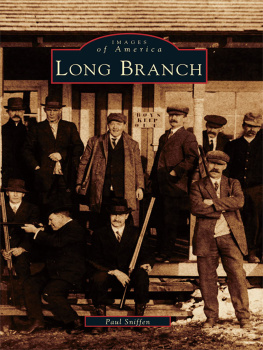One
The 1860s
CHRISTIAN HENRY BUHLMAYOR OF DETROIT 18601862. Born in Pennsylvania in 1812, he came to Detroit in 1833 and, together with his brother Frederick, built up a profitable hat and fur business. In 1855 Christian formed the wholesale hardware house of Buhl & Ducharme and helped develop Michigans steel, mining, and railroad industries. He died in 1894.
BIRDS-EYE VIEW OF THE CITY OF DETROIT IN 1860. From a wood engraving, this view shows the bustling riverfront and the Michigan Central Railroad roundhouse where train engines were rotated onto different tracks. In the distance one can count at least seven church steeples. Detroit had a population of 45,619 people in 1860.
MICHIGAN CENTRAL RAILROAD PASSENGER DEPOT. This terminal was located at Third and Woodbridge Streets and served its customers from 1835 until it was destroyed by fire in 1912. The billboard advertisement right next door directs passengers to the terminals of the Grand Trunk Railroad of Canada. A freight wagon and horse-drawn omnibus await their cargoes. In the background is the Cass Hotel, and an excellent example of a gas streetlight is in the foreground.
UNDERGROUND RAILROAD. Broadsides such as these were placed around the city notifying freedom-loving people of the safe arrival in Canada of 29 fugitive slaves from the Carolina and Kentucky plantations. Detroit was one of the northern terminals on the Underground Railroad with at least one station on the line.
FINNEY BARN. At the northeast corner of Griswold and State Streets stood the Finney barn, one of the stations on the Underground Railroad. Still a stable in this later photograph, the barn was a place of refuge for escaped slaves before they finally crossed the river into Canada and freedom.
FEDERAL POST OFFICE, APRIL 20, 1861. When President Lincolns call for troops to defend the Union arrived in Michigan, these able-bodied citizens gathered at the corner of Larned and Griswold Streets to hear patriotic speeches and to take the oath of allegiance. Spectators gathered on rooftops to see and hear the proceedings. James Royss bookstore and news depot had its largest crowd, while the Capitol Union High School stood alone at the end of Griswold Street.
FORT WAYNE, APRIL 1861. Men of the First Michigan Volunteer Infantry (enlisted for three months) take a break from training at the portcullis of the fort. Formed from the various private militia companies from Detroit, Jackson, Coldwater, and other outlying communities, this unit would be ready to depart for Washington within the month.

CAMPUS MARTIUS, MAY 11, 1861. The men of the First Michigan marched from Fort Wayne to Campus Martius opposite city hall for this special public ceremony. Thousands of citizens watched as the Ladies of Detroit presented the colors to the regiment. Speeches were given by prominent Detroiters such as Henry A. Morrow, George Duffield, and the units commanding officer, Colonel Orlando B. Willcox, before marching to the docks and returning by boat to Fort Wayne. Two days later, the men departed for the front. Shortly after their arrival in Washington, the first western regiment to reach the capitol, they were addressed by the President, who is said to have greeted them with, Thank God for Michigan. They fought courageously at the first Battle of Bull Run, losing 117 of their 500 officers and men, including their commander, who was shot off his horse and captured. The spire of the First Presbyterian Church dominates the scene and the diversity of businesses can be viewed along Woodward and Monroe Avenues. Ling and Chandler manufactured melodeons, which were small reed organs.
FORT WAYNE, SUMMER 1861. These men of the Second Michigan Infantry go through their drill at the fort. Over the course of the conflict, the State of Michigan contributed almost 90,000 men to the Union army, over 85,000 of them volunteers. This regiment was also made up of militia companies and was enlisted for three yearsthe first Michigan unit to be recruited as such.
FORT WAYNE, SUMMER 1861. The officers of the Second Michigan Volunteer Infantry pose for a formal portrait along officers row at the fort. Israel B. Richardson of Pontiac was the commanding officer, and Henry L. Chipman, the second in command. The regiment fought in both the eastern and western theaters of war.
BRUSH STREET, AUGUST 1861. The First Michigan Regiment returns to Detroit after serving its three-month commitment. The men are greeted by the enthusiastic citizens of Detroit at the Brush Street station of the Detroit and Milwaukee Railroad. Judge Charles Irish Walker delivered the welcoming address and, following the parade of the veterans, the Ladies of Detroit gave the returning heroes a splendid banquet.





















